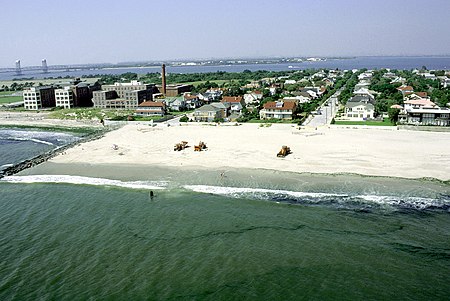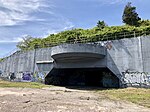Neponsit, Queens
AC with 0 elementsNeighborhoods in Queens, New YorkNeighborhoods in Rockaway, QueensPopulated coastal places in New York (state)

Neponsit is a small affluent neighborhood located on the western half of the Rockaway Peninsula, the southernmost area of the New York City borough of Queens. The area starts at Beach 142nd Street and ends at Beach 149th Street. It borders the neighborhood of Belle Harbor to the east and Jacob Riis Park on the west. Jamaica Bay and the Atlantic Ocean are the northern and southern borders. The neighborhood is part of Queens Community Board 14. As of January 1, 2007, the neighborhood's population reached just over 2,000, making it one of the smallest communities on the peninsula and in the entire borough of Queens.
Excerpt from the Wikipedia article Neponsit, Queens (License: CC BY-SA 3.0, Authors, Images).Neponsit, Queens
Neponsit Avenue, New York Queens
Geographical coordinates (GPS) Address Nearby Places Show on map
Geographical coordinates (GPS)
| Latitude | Longitude |
|---|---|
| N 40.572 ° | E -73.86 ° |
Address
Neponsit Avenue 143-01
11694 New York, Queens
New York, United States
Open on Google Maps








